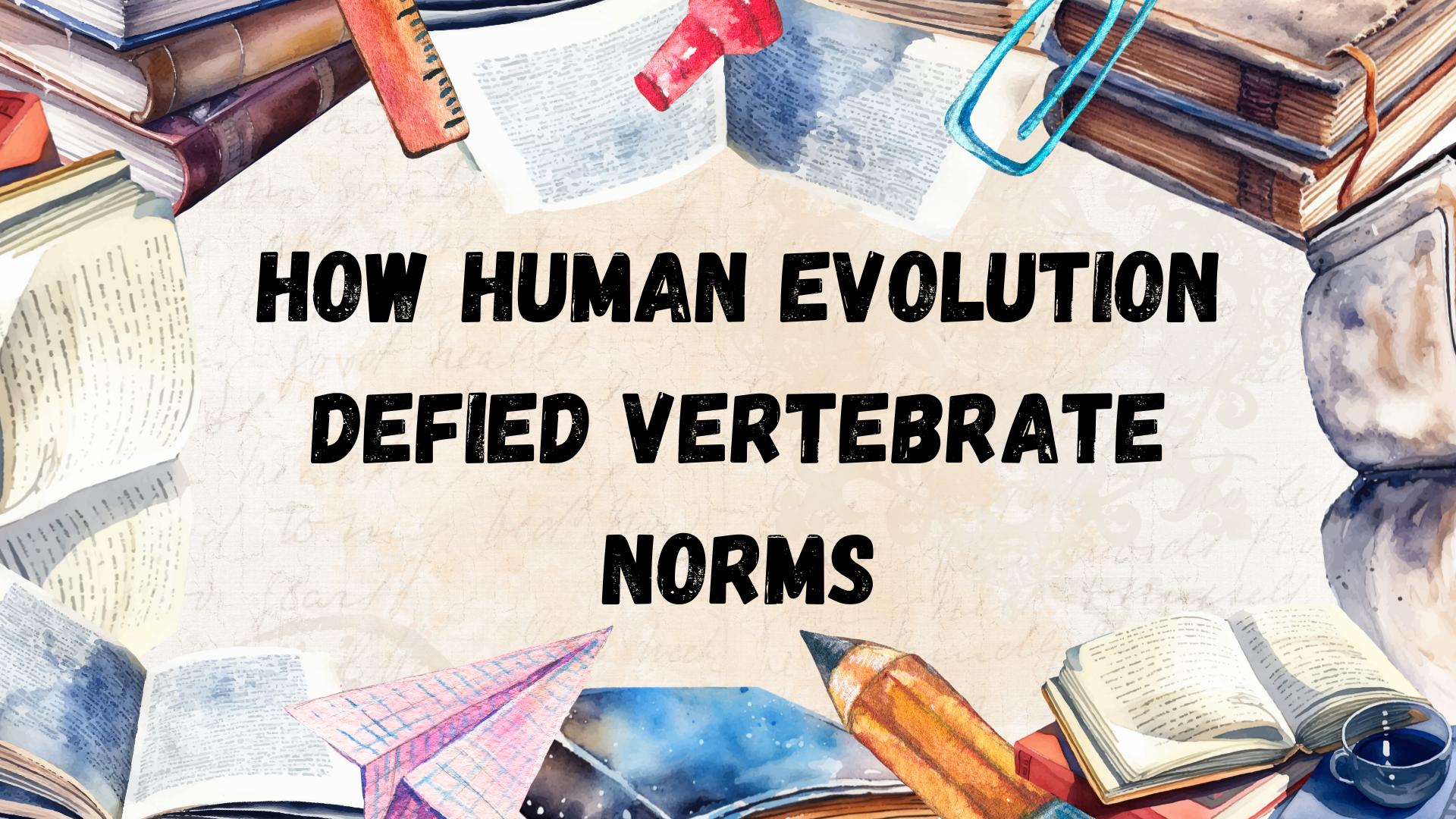We suggest the science enthusiasts and students to read this post and learn How Human Evolution Defied Vertebrate Norms.
How Human Evolution Defied Vertebrate Norms
The five major taxonomic kingdoms of bacteria, protists, fungus, plants, and animals comprise the majority of living things. In turn, there are two main types of animals in the animal kingdom: invertebrates and vertebrates.
Animals classified as vertebrates have a spine and an internal support structure composed of cartilage and bones. Vertebrates can move and sustain themselves thanks to their backbones. The vertebrate categorization has given rise to a vast variety of species, including humans, or Homo sapiens. In this article we are going to study about How Human Evolution Defied Vertebrate Norms.
Understanding Human Evolution
The term “human evolution” describes the evolutionary process that gave rise to the human species. Over a span of around six million years, humans developed from apelike predecessors through this process. It was from these ancestors that all modern humans inherited their physical and behavioral characteristics.

Human evolution is studied within various academic disciplines such as paleoanthropology, archaeology, genetics, linguistics, developmental biology, and paleoclimatology to understand the evolutionary history of humans. The evolution stages of humans entails a series of genetic material modifications and environmental adaptations.
More Information: Get Here
More than 3.5 billion years of evolutionary processes have produced humans. During the process, Human evolution has defied vertebrate norms in many ways, including:
- Bipedalism: More than 4 million years ago, humans developed the capacity to stand. This was a major anatomical shift involving changes to the axial and appendicular skeletons, teeth, and cranium.
- Brain size: Humans have a large and complex brain. With different compartmentalization.
Technological skills: The ability to identify, utilize, and manage planetary resources is a technical talent that humans have gained.
Behavioral traits: Humans exhibit special characteristics, including the capacity to generate art and music, undertake religious rituals, and create and manipulate symbols. - Cultural diversity: The previous 100,000 years have seen the development of intricate cultural variety, art, and profound symbolic expression by humans.
Genetic mutations: In a short time, the human gene pool has amassed a significant number of mutations.
In addition to the physical characteristics and behaviors that humans received from the first living things, primates, mammals, and vertebrates, they also developed new ones.
Final Discussion
The cognitive and verbal abilities of modern humans differ significantly from those of living apes. Given that humans descended from apes, the contemporary human mind might be thought of as a patchwork of characteristics shared by our near ancestors, with the addition of evolutionary specializations within certain fields.
These contemporary cognitive and linguistic adaptations unique to humans seem to be associated with the growth of the neocortex and associated structures. There have also been observed anatomical and molecular alterations that may be related to the modern human brain’s increased synaptic plasticity and higher metabolic needs.
Last but not least, the distinct brain development trajectory of contemporary humans has greatly influenced the cognitive and linguistic capacities of our species. All these features are unique for humans and have been completely different from that of apes.
We are very thankful to you for reading out our post on How Human Evolution Defied Vertebrate Norms, please feel free to share your knowledge in the comment section below.